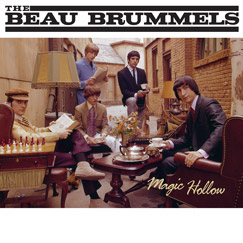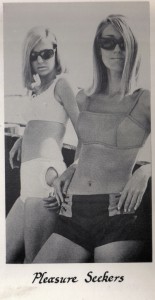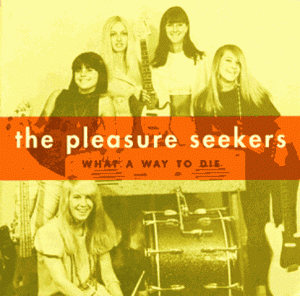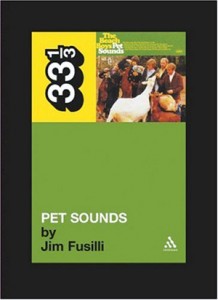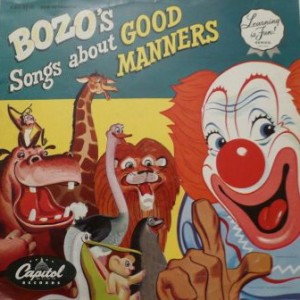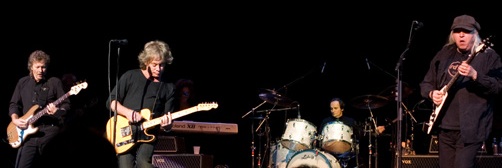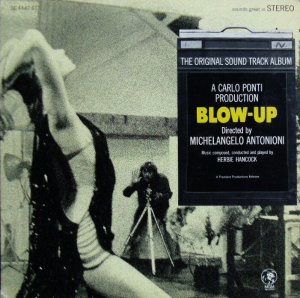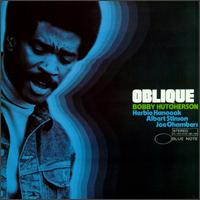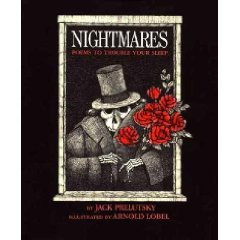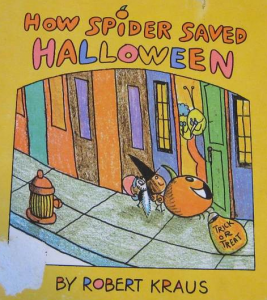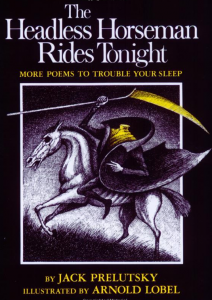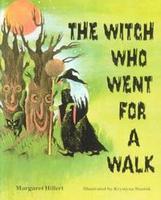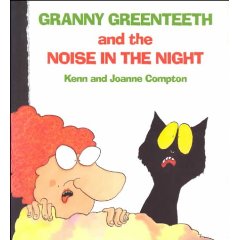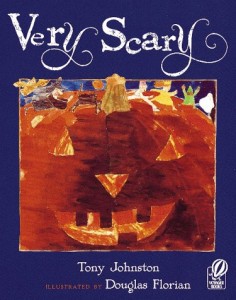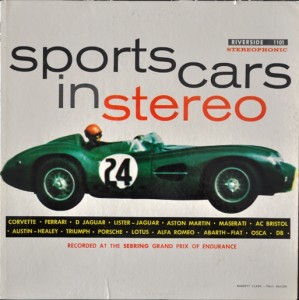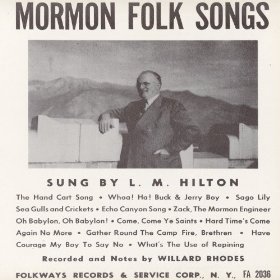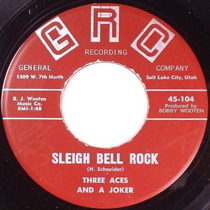
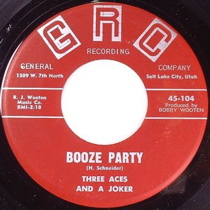
Three Aces and a Joker – “Sleigh Bell Rock”
Three Aces and a Joker – “Booze Party”
In my world, there’s no better way of kicking off the month of December than by paying tribute to one of the greatest Christmas singles ever – Three Aces and a Joker’s “Sleigh Bell Rock”/ “Booze Party.” I first heard the A-side of this rockabilly shredder back in the eighties on a Rhino compilation called Rockin’ Christmas: The 50’s (1984) and have loved it ever since. Just listen to it chug and bounce like a vintage Big Boy locomotive. Hear the lead guitarist making a run for the Mr. Personality prize with his shimmering, stinger-capped licks. And dig that front man taking iron-fisted control of the Christmas party. And then there’s that B-side, the wall-shaking “Booze Party.” It gets you blotto just by listening to it and it’s no surprise that it’s popped up in cover versions all around the world.
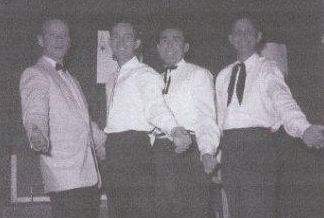
Three Aces and a Joker
Because I grew up in Salt Lake City, Utah, I’ve been particularly intrigued by the fact that such an early slab of wild abandon could find official release during rock ’n’ roll’s baby years in my own mild hometown. This is a place, needless to say, that you won’t hear name-checked in too many conversations about rock ’n’ roll history. (Although as a native Utahn I do hold three other facts close to my heart: 1) The Beach Boys wrote a glorious song about the capital city, focusing on nothing but its fun factors and girls; 2) Brian Wilson and Mike Love wrote “Fun Fun Fun” on 2100 S. on the way to the SLC airport; and 3) Bobby Fuller spent a good portion of his childhood in Bountiful before his family moved to El Paso, where he’d begin his ascent toward rock ’n’ roll godhood.)
I posted and wrote about “Sleigh Bell Rock” here last year and something happened which, in fact, is one of the only reasons I keep fiddling around with this blog – I heard from the person responsible for my subject. The man’s name is Hal Schneider (the “H. Schneider” credited on the label). He still performs, albeit under the stage name Hal Holiday, and he currently lives in Hooper, Utah (I seem to recall the locals pronouncing that to rhyme with “whoop ‘er”). I flipped over the chance to find out more about him and the backstory of his masterpiece. So here’s what I can tell you. Hal is not only the songwriter on both cuts, but also the singer and drummer. It turns out he was serving as Airman Second Class and stationed at Hill Air Force Base in Clearfield when the record came out. He was brought up in the Bronx, and had only recently moved to Utah. He’d been playing tenor sax in a rock ’n’ roll group called the Rhythm Rockers, but was goaded by some friends into singing a few numbers with a band playing a local nightspot called Parls 89. Not only did the group subsequently recruit him as their new singer, but they also talked him into doubling up as a drummer.
So who were the aces and who was the joker, then? The aces were brothers Jimmy Blevins (lead guitar) and Joe Blevins (rhythm guitar) as well as bassist Leon Simmons. Hal was both the joker and the guy who came up with the group’s new name. “I was always known as the joking kind of guy around the base,” he says. “And the ace part just seemed to fit.” Placing a high premium on showmanship, the group started packing the local beer joints in short order. “There weren’t many bands around that could play the variety that we did. We played rock ‘n’ roll, country, jazz, popular, and we put on funny shows,” remembers Hal. “We had a great crowd wherever we performed.”

Hal and Jimmy Blevins today. Jimmy currently plays in a band called Flashback; Joe passed away some time ago and Leon apparently quit playing after his stint in the band.
Hal wrote “Sleigh Bell Rock” and “Booze Party” as a one-two punch for Christmas and New Year’s. After playing the songs at a Salt Lake City nightclub called the Streamliner, they caught the ear of “Bashful” Bobby Wooten, who was then working as a disk jockey on country station KSOP (still in business and still country, btw) and who also ran his own small record label, GRC (General Recording Company). “He suggested we record the songs and so we did,” says Hal. Although “Sleigh Bell Rock” was able to muster up a smattering of local airplay upon its release in 1960, the flipside was a different story. “‘Booze Party’ didn’t get much play on the radio,” he says. “That was understandable because Utah is a Mormon state and they don’t believe in drinking.”
(“Booze Party,” incidentally, is chronologically the third of four notable songs I know of that use the “wine wine wine” refrain – Sticks McGhee’s “Drinkin’ Wine Spo-De-O-Dee” from 1949 is first, Floyd Dixon’s 1952 swing number “Wine Wine Wine” is second, and the Nightcaps’ own 1962 frat anthem “Wine Wine Wine” is fourth. These songs are different enough from each other for it not to really matter, but I do wonder if the Nightcaps were influenced at all by “Booze Party,” let alone the Dixon song. Hal had never heard of Sticks McGhee, Floyd Dixon or “Wine Wine Wine” before I asked him about it.)
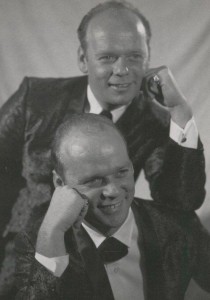
Promo pic of Hal and his twin brother Jack, who toured and performed together until Jack’s passing in 1983
It was all a good laugh, and soon enough Three Aces and a Joker went their separate ways. Bobby Wooten, not long after releasing this 45, struck a nerve with Utah’s deer hunting legions with the single “Going Deer Hunting”/ “Deer Hunting Widow,” which never charted nationally, but nonetheless became his GRC label’s steadiest seller. He went on to make a name for himself as a popular radio personality during the 60s on Seattle country station KAYO, and he also wrote the liner notes for Buck Owens’s I’ve Got a Tiger By the Tail LP. He retired from radio in the seventies and passed away in 1998. As for Hal, he settled down in Northern Utah with his wife and kids and had no idea that his two songs, especially “Booze Party,” would be taking on a life of their own, showing up on numerous compilations and securing themselves beloved entry in many a rockabilly diehard’s personal Hall of Fame.
James Austin, VP of A&R at the major reissue label Rhino Records is one of these diehards. He’s actually the one who compiled and wrote the liner notes for the 80’s record on which I first heard “Sleigh Bell Rock.” He remains a huge fan of the 45, and I was recently fortunate enough to have a conversation with him about it. “They played with the go broke mentality we’ve come to love and respect about rock and roll,” says Austin. “ ‘Sleigh Bell Rock’ is as good as any rock and roll Christmas record ever made, but the B-side is especially worth taking note of,” he says. “For them to be singing about that subject in that manner at this place in time is pretty damned adventurous. You listen, and nothing seems illegal or reckless in their world, and this is the attitude that helped build the house of rock. And the fact is, all too many originators like them have gotten no recognition.”
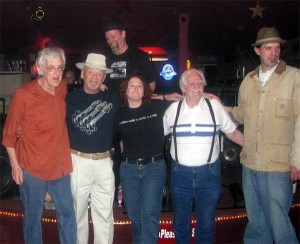
Hal (second to left) and friends with guitar legend Bill Kirchen (far left) during a swing through SLC (L to R: Kirchen, Hal, Dan Weldon above Hal, Korene Greenwood, original Three Aces guitarist Jimmy Blevins, and Brad Wheeler; Greenwood currently leads her own group Korene & Company, and Weldon and Wheeler perform as a well-esteemed blues duo called the Legendary Porch Pounders)
Austin’s words say a lot about the record’s enduring appeal. As I mentioned, both titles appear regularly on compilations, many of which are semi-legal affairs that the compilers have never bothered to properly license. This, I confidently assume, happens because 1) the legal homework presents too many headaches for the compilers and their small labels, and 2) so many of the artists who brought these old one-offs into the world were either innocent of the fact that additional steps needed to be taken in order for them to get situated on a business level, or else they moved on and lost sight of their creations’ ongoing profit potential.
Hal’s a good illustration of this latter syndrome. “All these years went by and I never knew that other bands have recorded my songs,” he says. “I never received any royalties on either song. I would have thought I should be making a few bucks on some of those albums that have me doing the singing. Next year I’ll be 70 years old and if anything’s going to happen, I hope it’s soon. But I’ve never tried to find out anything.” Side by side with this sentiment is an undeniable sense of personal pride. “I understand through some of my musician friends that my songs are listed in the Rockabilly Hall of Fame,” he says. “I was thrilled to hear that.”
As for me, my ideal conception of Hal’s future is one in which he at least gets his performing rights registration and general business situation in order – something we’ve already been talking about. But it’s also one in which he gets rediscovered by the kinds of people who can present him to the kinds of appreciative audiences who are most certainly out there, and who can give him the kind of recognition he deserves. And also that he gets an album out.
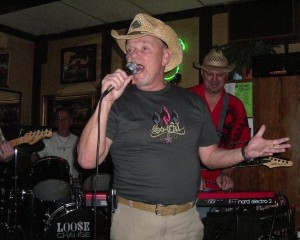
Hal with Loose Change in 2006
On that note, if there’s any point I’d like to make clearest with this write up, it’s that Hal Schneider, aka Hal Holiday, is STILL WORKING as a viable performer. Never stopped, actually. For a long time, he had an act with his identical twin brother Jack, until he passed away in 1983. He continues to perform in the Ogden and Salt Lake areas, frequently with a local band of crack musicians called Loose Change. On top of that, he runs a yearly show called the Hal Holiday Revue, which promotes local talent, and he regularly volunteers as an entertainer at assisted living centers throughout the area. Hal is soldiering forth, in other words, as the kind of performer who can still win people over on his own merits and not simply through his key involvement with a classic record from the past. (I’ve recently heard through the grapevine that he’s done just that, on both counts, with Big Sandy and Los Straitjackets who recently swung through SLC and got a chance to hear him do his thing. Big Sandy’s group the Fly-Rite Boys, incidentally, recorded a cover of “Booze Party” in 1998). My hunch is that Hal’s rock and roll adventures are far from over, but whatever the future holds, Hal’s no longer just a joker – he’s also a king.
posted by Kim Simpson
